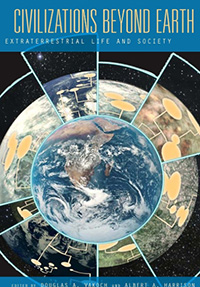In this week’s eSkeptic:
Our Next Lecture at Caltech:
DR. MARC RAYMAN

To Boldly Go…Well, You Know: NASA’s Dawn Mission to the Asteroid Belt
with Dr. Marc Rayman
Sunday, March 17, 2013 at 2 pm
THE AMBITIOUS DAWN MISSION, launched in September 2007, is one of NASA’s most remarkable ventures into the solar system. The spacecraft has recently completed a spectacular exploration of Vesta and is now traveling to Ceres; these were among the last uncharted worlds in the inner solar system prior to Dawn. They are the two most massive residents of the main asteroid belt. Ceres is so large that it is included in the category of dwarf planets, along with Pluto. Remnants from the time that planets were formed, Ceres and Vesta hold clues that will help scientists understand the dawn of the solar system. Dawn orbited Vesta from July 2011 to September 2012 and returned astonishing views of this fascinating world. It is the only spacecraft ever to orbit an object in the asteroid belt. Such a mission would be impossible without the use of ion propulsion, a technology that has mostly been in the domain of science fiction, but which was tested extensively on the Deep Space 1 mission, paving the way for Dawn. Dr. Marc Rayman, Dawn’s Chief Engineer and Mission Director at JPL, will describe the Dawn mission and its use of ion propulsion as well as its two exotic destinations. He will also share the excitement and profundity of controlling a spacecraft in deep space.
Followed by…
- Give and Take: A Revolutionary Approach to Success
with Dr. Adam Grant
Sunday, April 28, 2013 at 2 pm - Odd Couples: Extraordinary Differences between the Sexes
in the Animal Kingdom
with Dr. Daphne J. Fairbairn
Sunday, May 19, 2013 at 2 pm
New Admission Policy and Prices
Please note there are important policy and pricing changes for this season of lectures at Caltech. Please review these changes now.

NEW ON SKEPTICBLOG.ORG
Quick Bigfoot DNA Update
In this week’s Skepticblog, Daniel Loxton offers a few quick thoughts about the recent release of Ketchum’s Bigfoot DNA paper.


The Bug Chicks: Kristie Reddick and Jessica Honaker
Arachnophilia
Some people have a fear of bugs and creepy crawlies. Kristie Reddick and Jessica Honaker—collectively known as The Bug Chicks—work to fight myths about these fascinating creatures and to promote science and wonder. In this episode of MonsterTalk, we discuss giant spiders, common misconceptions and the entomologists’ experience on the TV show MonsterQuest.
About this week’s eSkeptic
In this week’s eSkeptic, George Michael reviews the book Civilizations Beyond Earth: Extraterrestrial Life and Society edited by Douglas A. Vakoch and Albert A. Harrison (Berghahn Books, 2011, ISBN 978-0857452115).
George Michael received his Ph.D. from George Mason University’s School of Public Policy. Currently, he is an associate professor at Westfield State University in Massachusetts. Previously, he was an associate professor of nuclear counterproliferation and deterrence theory at the Air War College in Montgomery, Alabama. He is the author of five books, including Willis Carto and the American Far Right, Theology of Hate: A History of the World Church of the Creator, and Lone Wolf Terror and the Rise of Leaderless Resistance. In addition, his articles have been published in numerous journals.
Contemplating
Extraterrestrial Civilizations
a book review by George Michael
According to a “cosmic census” extrapolated from NASA’s Kepler telescope, at least 50 billion planets reside in the Milky Way Galaxy. (“Cosmic census finds crowd of planets in galaxy,” Associated Press, February 20, 2011.) Moreover, approximately 50 planets have been identified as candidates that are not only similar to Earth in mass, but also located in the habitable zones of their respective solar systems. And new discoveries of so-called extremeophiles on Earth—organisms that can live in severe environments from the very cold to the very hot to the very toxic—suggest that life could exist elsewhere in the universe. These recent findings would seem to augur well for the SETI (Search for Extraterrestrial Life) enterprise, which uses scientific methods to scan the galaxy for electromagnetic transmissions from extraterrestrial civilizations.
In an edited volume, Civilizations Beyond Earth: Extraterrestrial Life and Society, two notable SETI researchers, Douglas A. Vakoch, a professor of clinical psychology at the California Institute of Integral Studies and also the director of interstellar message composition at the SETI Institute, and Albert A. Harrison, a professor emeritus of psychology at the University of California, Davis, present a variety of essays that speculate on the nature of alien intelligence and the prospects for contact. A diverse array of contributors from various disciplines including anthropology, astronomy, biology chemistry, computer science, journalism, mathematics, psychology, and sociology offer their perspectives on the nature of extraterrestrial intelligence and civilizations.
Seth Shostak, the senior astronomer at the SETI Institute, presents a primer on astrobiology, which may be defined as the study of the origins, evolution, and distribution of life in the universe. He details the numerous factors assumedly necessary to give rise to life on other planets. Perhaps most important is water, in that “a fluid environment dissolves organic molecules so that they can interact in the chemical dance of life as compounds enter and leave cells.” Although other liquids might serve these functions, water remains fluid over a wider range of temperatures than the alternatives that would most likely be found on other worlds. If organic elements can be found on other planets, then perhaps life could take hold as well. As Steven J. Dick argued in The Biological Universe, just as the principles of physics and chemistry hold true throughout the universe, so do the principles of biology. Although the evolution of Homo sapiens is unlikely to occur on another planet, functionally equivalent intelligent beings may exist, albeit in a much different physical form.
To illustrate this point, Shostak uses the example of the streamlining of ocean predators. The torpedo-shaped body plans of both the barracuda and dolphins reflects good engineering for two species whose survival depends on moving through the water quickly. Though these two species are only very distantly related, their similar physiologies are the result of convergent evolution. Perhaps intelligence could evolve in different species as well. A study of the fossils of dolphins and toothed whales from the last 50 million years indicates that some species have dramatically increased their intelligence (as measured by the ratio of brain to body mass). The fact that several species have increased their cognitive faculties leads Shostak to believe that convergent evolution is at work adapting different species to a niche market for intelligent animals. He concedes that most planets in the galaxy will be unsuitable for evolution leading to intelligence, but he counters that in a galaxy in which habitable worlds could easily number in the billions, “it requires heroic pessimism to argue that only [italics in original] Earth has the mise en place for cooking up thinking beings.”
Drawing upon cognitive archaeology, Paul K. Wason, the director of life sciences at the John Templeton Foundation, notes the inherent difficulties in communication between even closely related species. For his chapter, he focuses on the encounter between Neanderthals and early modern humans. Modern humans and Neanderthals coexisted for quite some time. For instance, it is likely that they shared the Levant for some 60,000 years, though evidence of them living side by side is unclear. Modern humans entered Europe roughly 40,000 years ago. Inasmuch as Neanderthals did not die out until about 30,000 or 32,000 years ago, there was considerable time for the two species to overlap while there. Although Neanderthals made tools, they were far less sophisticated than those created by Upper Paleolithic hunters. Neanderthals did indeed make limited use of symbolism, but there is virtually no accepted evidence that they engaged in artistic activities, such as painting or music. Wason argues that the interrelationships between social intelligence and technical intelligence found in modern humans would be opaque to Neanderthals. In short, Neanderthals would have much difficulty interpreting the lives of modern humans. The implications for SETI are sobering, for if two such closely related species as Neanderthals and Homo sapiens would have such a difficult time understanding each other, meaningful dialogue with an independently evolved species could be even more challenging. Rather than expecting to fully understand another species, he suggests that a more reasonable goal is to identify the intentions in their signals.
Alan J. Penny, a visiting scientist in the School of Physics and Astronomy at the University of St. Andrews, discusses the connection between the genetic evolution of the brain and the expected lifetimes of scientific civilizations. The framework of his analysis is the Drake equation, a formula SETI scientists use to estimate the number of communicative civilizations in the galaxy. The “L” variable in the equation is the length of time that an extraterrestrial civilization remains detectable. As Penny points out, for the sake of SETI, civilizations should not be viewed as an enduring political entity, but rather one characterized by science and technology, specifically, one that emits electro-magnetic radiation. In order for a civilization to emit radiation, he reasons that science must be practiced. It follows that the genetic structure of the brains of the members of the civilization must permit the kind of thinking that makes science possible. He points out that certain traits inherent in Homo sapiens were the result of genetic events. According to Penny, “conceptual” thought arose a mere 3,000 years ago, citing Hellenic mathematics and early Greek and Chinese literature as the first clear evidence of modern abstract thinking. He proposes that the gene mutation that triggered conceptual thinking occurred only in a limited number of persons in the population. However, these gifted individuals instigated a culture of conceptual thinking. Children without this inherent ability were raised to acquire it through nurture rather than nature. It is quite possible, he argues, that unless cultural or other external influences intervene, genetic changes could undo the kind of thinking that made science possible. In fact, there is archaeological evidence that suggests that the brain size of Homo sapiens has fallen by 10 percent in the last 30,000 years. Subsequent genetic events might reverse this capacity for scientific thinking, and in doing so, limit a civilization’s technological longevity.
Using cultural anthropology as her framework, Kathryn Denning, an associate professor of anthropology at York University, also examines the L variable in the Drake equation. As she explains, anthropology demonstrates that the notion of unilinear social evolution is inaccurate and overly simplistic. Nevertheless, the idea of unilinear progress has taken root in Western thinking and assumed by many SETI scientists. For instance, Carl Sagan counseled that in order to survive, humans would have to make it though a “technological adolescence” where the threat of nuclear annihilation, global warming, environmental despoliation, and overpopulation loomed large. Once humans passed through this perilous transition, they would be prepared to colonize the cosmos. However, archaeological studies indicate some societies have merely down-shifted to a less energy-intensive form of social organizations and survived. Rather than taking unilinear progress for granted, she counsels that we should consider the range of possibilities on other planets.
Donald E. Tarter, a long-standing member of the International Academy of Astronautics’ SETI Committee, recounts how the great space expeditions of the 1960s and beyond, with their distant photographs of the Earth, fostered a sense of collective heritage and focus. On both the national and international scene, a culture seemed to be edging toward an enlightenment in which a broader human perspective awaited us. However, the events of September 11, 2001, precipitated a drastic change in global politics characterized by the clash of civilizations as predicted by Samuel Huntington several years before. Atavistic hostilities reemerged, as religious and ethnic identities hardened. Tarter sees the SETI enterprise as an opportunity for us to regain our sense of human unity, for if we are able to detect evidence of other civilizations in the cosmos, we may find it easier to envisage ourselves as one civilization among many.
To that end, Tarter advocates the placement of radio telescopes on the far side of the Moon as that would be an excellent location not only for astronomy, but as a SETI listening post as well. Even more ambitious would be the creation of a “gravitational lens” that would use the sun to provide a detailed view of the entire universe. The concept stems from Einstein’s theory of relativity, which posits that the presence of mass bends space. The massiveness of the sun significantly warps the space it occupies. If a receiving device could be placed in a far region of space, we could have a new window to the cosmos. Tarter speculates that someday we might be able to use quantum entanglement as a means of interstellar communication. By doing so, we could communicate instantaneously across great distances, thus avoiding the limitation of the speed of light as outlined in Einstein’s Special Theory of Relativity.
As Tarter explains, when photons are entangled, the observation of one will produce instant effects for the observer of the twin photon irrespective of the distances separating them. This effect has been demonstrated in numerous experiments. For his plan, Tarter calls for sophisticated “photon traps” that would grab and store the photons for polarization measurement. The information transmitted would be carried in the changing polarization of the photon stream. Once two civilizations have entangled photons in the position, instant communication would then be possible. However, the initial contact could not exceed the classical limit of the speed of light. Tarter imagines that advanced civilizations might use massive and distant cosmic phenomena such as gamma-ray bursts to carry their quantum keys throughout the universe. In that sense, the gamma-ray bursts could operate as an intergalactic network of information transfer not unlike the human brain in which the interstellar signals approximate the firing of neural synapses.
George Pettinico, the director of market research at Boehringer Ingelheim Pharmaceuticals, examines attitudes in America about the prospect of extraterrestrial life. For his analysis, he draws upon a 2005 telephone survey conducted by the National Geographic Channel, the SETI Institute, and the University of Connecticut that found that a majority of Americans—60 percent—expressed a belief that “there is life on other planets in the universe besides Earth.” The study identified two key demographic factors that influence people’s attitudes about extraterrestrial life—level of education and religiosity. Americans who are more religious (as measured by the frequency of religious service attendance) are twice as likely to reject the notion of life on other planets. Simply put, the more religious a person is in America today, the less likely that he or she is to believe in the prospect of extraterrestrial life. This finding is consistent with expectations insofar as conservative Christians are more likely to view the universe—despite its size and scope—as existing for the benefit of humanity alone. Although most religious Americans accept the notion that the Earth is not at the physical center of the universe, it nevertheless remains as the single spot of divine focus where God created life. Still, nearly half (45 percent) of religious Americans believe that life exists on other planets besides Earth. Those people who are open to the possibility of the existence of extraterrestrial life are also more sanguine about eventually making contact someday. College-educated respondents were less fearful of the discovery of extraterrestrial life than their less educated counterparts.
In his chapter on the relationship between cultural beliefs about extraterrestrials, William Sims Bainbridge, a co-director of human-centered computing at the National Science Foundation, presents the results from an online questionnaire—Survey 2001—which was sponsored by the National Geographic Society and the National Science Foundation. The survey questioned people on the prospects of alien life and UFOs. While a significant majority of the respondents expressed a belief that intelligent life probably exists beyond Earth, just over a fifth of them agreed that UFOs are probably spaceships. Bainbridge found a strong correlation between believing in UFOs and astrology, but no connection between the latter and the belief in extraterrestrial life.
Albert A. Harrison discusses the science and politics of SETI. As he explains, avoiding the UFO taint is important for SETI scientists so that they can gain standing with peers, granting agencies, and the public. Early SETI pioneers, such as Philip Morrison, Frank Drake, and Carl Sagan, rapidly gained the interest and support of powerful, influential scientists. Professional scientists use boundaries to define what is and what is not science in their respective fields. Boundary work seeks to monopolize the professional authority of expertise in a particular field. By doing so, scientists create a system of checks and balances that help themselves converge upon the truth as they discover it. For instance, SETI scientists have developed elaborate protocols for confirming possible extraterrestrial messages. The basic tactic of this “border work” is to make positive attributions about one’s research while denigrating the work of pseudo-scientists who ignore or misapply the rules of science. Harrison identifies various strategies that SETI scientists use to create a boundary between their field and UFOlogy. Bashing one’s opponents is one method of border work, but as Harrison notes, can sometimes backfire. In some cases aggressive debunking of UFO claims—for instance ascribing them to swamp gas or fireflies—can seem less plausible than the initial claim. Silence is another method of border work, but it can allow UFOlogists to claim that mainstream scientists have taken neither the time nor the effort to examine the evidence. Finally, education can be applied to dissuade the public from taking UFOs seriously. However, inasmuch as much of the public in not particularly well-versed in science, this approach of border work can be an “uphill battle.” In an age of declining scientific literacy, vast numbers of the populace are not inclined to think like scientists or skeptics. Yet, he maintains that education is the most promising strategy for minimizing confusion between SETI and UFOlogy in the public’s mind.
Carl DeVito, a professor emeritus in mathematics at the University of California, Davis, discusses some cultural aspects of interstellar communication. Because of the constraints on speedy interstellar communication due to the tremendous distance between solar systems, he notes that any contact will not be a dialogue in the usual sense of the term. If contact is ever established, he recommends that our reply should consist of a series of messages—perhaps a week or a few days apart—that contain more information than the last, but also some redundancy as a check on interpretation. Inasmuch as humans and extraterrestrials share a common physical reality, their independent attempts to understand the universe through science will tend to converge over time. After all, the laws of physics and chemistry are universal. Furthermore, because they resist interpretations as having moral or religious overtones, messages based on science and mathematics are less likely to offend anyone and would thus make good starting points for an interstellar conversation.
If we should decide to send messages in space to extraterrestrial civilizations, Harry Letaw Jr., a physical chemist who serves as the principal of Letaw Associates, recommends that they should include a form of “cosmic storytelling.” As a species, human beings are a species of storytellers; hence a narrative embedded in a message could impart a reasonably accurate portrait of the human condition. Images of human activities could be used to convey stories that would provide a context for interstellar communication that might be lacking in messages containing only abstract symbols such as an alphabet and numbers.
William Sims Bainbridge explores the possibility of establishing direct contact with extraterrestrial aliens by way of computer emulation. According to Bainbridge, cognitive science and information technology are progressing in a direction that will one day make it possible to transmit realistic avatars of individual human beings to extraterrestrial civilizations. Not unlike Ray Kurzweil—who predicts a “singularity” in the year 2042 when humans will transcend biology—Bainbridge notes that the convergence of artificial intelligence and cognitive neuroscience has prepared the basis for the prospect of personality capture and emulation. In the not-so-distant future, people might be able to capture their personalities in computers. This scanned information could then be transmitted at the speed of light to other planets. Bainbridge predicts that the first interstellar expeditions will not be carried out by biological-based humans with their physical limitations and short life spans; rather, “infonauts” could travel at the speed of light as bits in a communication path. Bainbridge envisages a virtual reality “Cosmopolis” where multiple civilizations will send avatar ambassadors who emulate the original biological beings from whom they were derived. There, they will engage in varieties of social interaction including trade and cultural innovation. Stretching the bounds of physics, Bainbridge explains that because these avatars would reside locally in the Cosmopolis within information systems equipped with sensors and robots (perhaps quantumly entangled with instruments elsewhere?), communications between civilizations could be instantaneous and would not be bound by the speed of light limitations on interstellar radio transmissions. As a result, the avatars could serve as real time ambassadors not unlike their counterparts on contemporary Earth.
Jason T. Kuznicki, a research fellow at the Cato Institute, challenges the SETI assumption that extraterrestrial aliens, by virtue of their communicative abilities, will share with humans a certain set of concepts such as mathematics, logic, and spirituality. Examining the historical case of contact in the 17th century between the French Jesuits and the Montagnais, Huron, and Iroquois tribes in what is now Eastern Canada, Kuznicki demonstrates that there were significant differences between the Jesuits and their Indian interlocutors over the nature of metaphysical concepts such as the soul. From this case, he infers that humans, at least initially, may find the reasoning of extraterrestrial aliens to be woefully defective. Likewise, they may find ours equally perplexing.
Kathryn Coe, a professor of public health at Indiana University-Purdue University Indianapolis, Craig T. Palmer, an associate professor in anthropology at the University of Missouri, and Christina Pomianek, a Ph.D. candidate in anthropology at the University of Missouri-Columbia, examine the relevance of evolutionary theory for the SETI enterprise. As they point out, because organisms self-replicate, they will be subject to the dynamics of natural selection with the implication that those that replicate themselves more effectively will come to predominate over those that replicate themselves less effectively. Invoking the principle of convergent evolution, they argue that there are sound reasons to believe that the senses of sight and hearing will be found in beings on other worlds as well. After all, both vision and audition have evolved independently multiple times on Earth. They warn that insofar as life evolves through competition, we should be wary of making contact with extraterrestrials who may view us as competitors. After all, to survive for so long, they would have been successful in their competition with other life forms. For that reason, quoting David Swift, it might be “prudent to remain silent in the jungle.”
Morris Jones, an Australian space analyst, discusses SETI message composition from a journalistic perspective. As he points out, historically, SETI scientists have maintained good relationships with journalists; however, these relationships have been one-sided in the sense that the SETI scientists provide material for the journalists’ stories. Jones proposes that the SETI community could benefit by encouraging input in the opposite direction, that is, from journalists and media specialists to SETI scientists when contemplating how to compose interstellar messages. Inasmuch as an extraterrestrial civilization receiving a message from Earth is likely to be far more technologically advanced than we, the former is likely to find nothing novel in our communications if it is based on scientific or mathematical principles. In order to make our SETI messages more interesting, Jones counsels that it might be useful to spice them up with entertaining hooks to attract their attention. These hooks could be in the form of art, music, or anything else that is likely to be distinctive to our species.
If intelligent beings have emerged elsewhere in the cosmos, it is likely that they have contemplated these issues discussed in this volume and would be interested in communicating with intelligence outside of their planets. To some scientists, the receipt of an alien message would be the most important event in human history, for it would prove that we are not alone in the cosmos. By inference, it would demonstrate that an advanced civilization was able to work through the myriad of problems associated with advanced societies, including global warming, pandemics, overpopulation, and nuclear proliferation. Furthermore, if a civilization can surmount these problems, presumably, its technology will continue to advance, in which case some form of interstellar travel could someday be possible. If that is the case, then one day we might actually come face to face with civilizations beyond Earth. ![]()

The Skeptic Magazine App
Download the free 44-page Preview Issue
Get the free Skeptic Magazine App and enjoy digital subscriptions and back issues on your iOS and Android devices, PC, Mac, Kindle Fire, Kindle Fire HD, BlackBerry PlayBook, and Windows 8 devices!
- Digital subscriptions $14.99 (4 issues)
- Digital back issues $4.99 each
- 44-page Preview Issue: free!












